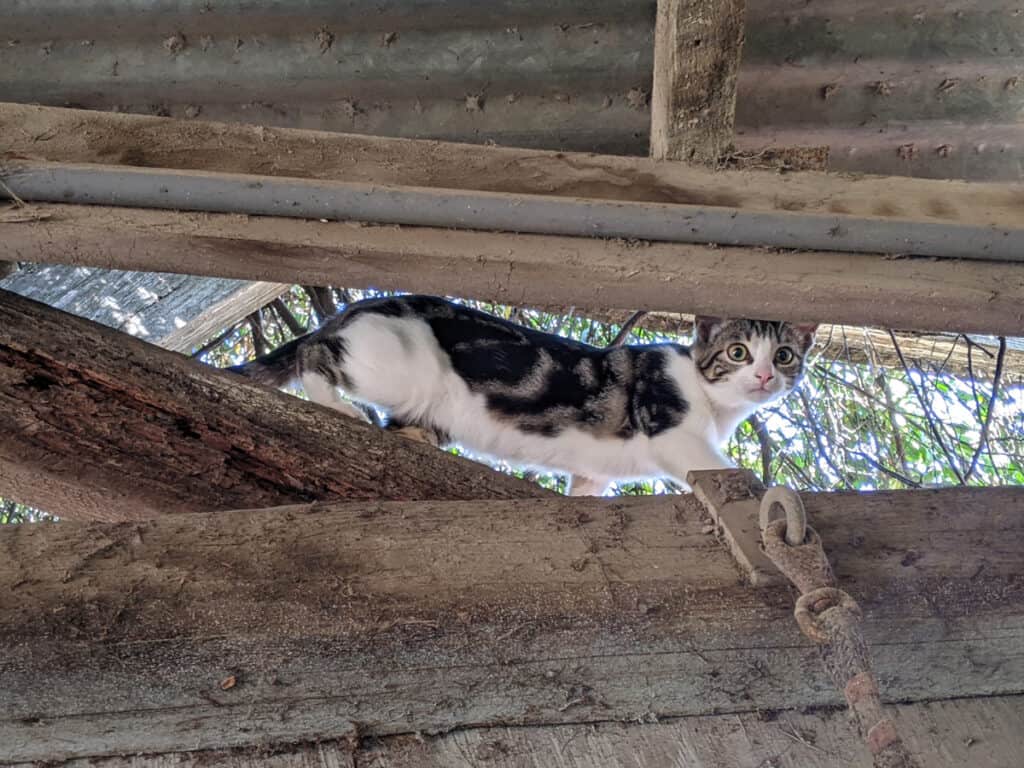Barn cats, also known as farm cats, are cats that are mostly or entirely outdoor domestic cats that live on in an agricultural or at a horse stable. Like library cats and bodega cats, library cats are considered working cats.
Barn cats can vary greatly in how socialized they are with humans. Some barn cats are fully feral and avoid all contact with humans. On the other spectrum are barn cats that, while spending a lot of time outside, still live in close contact with humans.
Barn cats can also range in how much supplemental care and food they get from humans. Some barn cats exist entirely on what rodents they can catch and receive no veterinarian care. Other barn cats get supplemental food and receive medical care and vaccinations.

Health of Barn Cats
Barn cats that receive little or no human care tend to fare more poorly and have shorter life spans compared to indoor cats. Predation by coyotes, large birds or prey, and other wildlife is one danger to outdoors cats.
Parasites and illnesses are also common among barn cats. Eating rodents that have ingested rat poison is another danger for these working cats.
Therefore, it’s important, when possible, to provide supplemental food and water as well as medical care to barn cats. The notion of a fully independent domestic cat is often misguided as these cats continue to need human care in order to lead healthy lives.

Adopt a Barn Cat Programs
Some animal shelters, especially those is more rural areas, have programs that adopt out unsocialized fixed cats that will permanently reside outside.
Adopters must provide these cats with food, water, shelter, and medical care. This is one way that shelters can find homes for feral and semi-feral cats that aren’t suitable as indoor cats.

These cats are spayed/neutered, dewormed, and vaccinated before being adopted out. The ears of these cats are tipped to signify that the cat has been desexed and has a “home.
To acclimate the cats to their new environment, the adopter has to first keep the cat in a secure location for a few weeks. This teaches the cat where food and shelter are available and reduces the likelihood that the cat will run off once released.

References
Rollin, B. E. (2005). An ethicist’s commentary on a veterinarian’s obligation to treat stray barn cats. The Canadian Veterinary Journal, 46(4), 299. https://www.ncbi.nlm.nih.gov/pmc/articles/PMC3085339/






